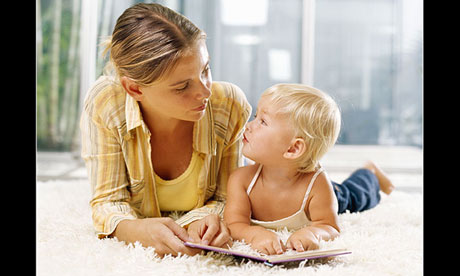
Highlights from the chat
Emma Keller: We gave readers this task: "Lay your awake, alert infant on her back. With firm pressure press down on the palms of both of her hands and hold for about a second. Then, also with firm pressure, press down on the soles of her feet and hold for about a second." Shaun, tell us what happens and why.
Shaun Gallagher:
When you apply firm pressure to your infant's palms, your baby will reflexively open his/her mouth. It's called the Babkin reflex. In addition to the mouth-opening response, babies often turn their necks and sometimes draw their legs up close to their body.
Keller: There's no point to it? It's just reflexive?
Gallagher:
Actually, for parents, the Babkin reflex has a very good practical use. If your newborn isn't feeding well, you can apply pressure to her palms to get her to open her mouth and nurse or take a bottle.
Keller: Now I was thinking of the experiment where the baby is given a sour object. Remember that one?
Gallagher:
Yes! "The Face Matches the Feeling." Their facial expressions were found to become more specific and more appropriate to the situation over time. The older babies get, the more their emotional expressions are differentiate, making it easier to tell what they're feeling. That holds true not only for a puckering, sour-faced response to a sour-tasting substance, but to other emotional responses, such as happiness when being tickled.
Are you a new parent or the parent of a newborn? Have you ever wondered what your baby's facial expressions mean? Or why s/he always grabs at certain objects, while totally ignoring others? Software engineer (and parent) Shaun Gallagher has come up with 50 tests you can conduct on your baby in Experimenting with Babies: 50 Amazing Science Projects You Can Perform on Your Kid to explain their behavior and understand them better. Join us for today's live chat if you want to understand your little one’s facial expressions. Or if you want to know the difference between a reflexive and a controlled grab, or lunge.
Gallagher’s experiments are for babies aged 0-24 months. Here are a couple for you to try while you wait for our live chat to start.
•0-6 months:
Lay your awake, alert infant on her back. With firm pressure, press down on the palms of both of her hands and hold for about a second. Then, also with firm pressure, press down on the soles of her feet and hold for about a second.
Look closely at what she does. Make a note of it. Report back to tell us during our chat. We will explain it to you then.
•6-24 months
Place two easy-to-reach containers (such as small cardboard boxes) in front of your baby. Show him a toy, and then place it in container A. Allow the baby to retrieve it from container A. Repeat the process several times, each time placing the toy in container A. Then place the toy in container B.
If you have questions about your baby's behavior, toss them in the chat module below and then come back at 1pm ET (6pm UK time) to join our discussion!

